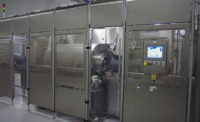The food industry understands the impact temperature can have on a cold food product. A searing charcoal grill can radically alter the flavors of a juicy steak, just as the chilling ice of a freezer can create delicious frozen desserts. Yet a temperature fluctuation of just a few degrees in the wrong direction can be catastrophic to the flavors and quality of your food. That’s why food distributors must be masters of temperature to ensure that the products delivered around the country are safe and of high quality.
Currently, there are no specific nationwide standards on the definition of “frozen.” But, all professionals use standards that mandate frozen foods be transported and stored at 0°F, with ice cream and other novelties at -20°F. Simply being below 32°F does not protect frozen foods from quality issues.
Under the Food Safety Modernization Act (FSMA), many of today’s practices will become requirements for food distribution companies. The same act states that distribution companies must perform a hazard analysis and put in place risk-based preventive controls.
Maintaining the cold chain
From a food safety perspective, the single most important part of the distribution process is maintaining the cold chain, which is necessary in ensuring optimal flavor, texture, odor, color and cooking performance for frozen foods.
This is also true in maintaining the quality of food, as proper temperature management is paramount. Obviously it’s important that frozen food not thaw, but it’s also important that the temperature remains constant throughout the whole distribution process. Even fluctuations of a few degrees can compromise quality.
There are several quality problems that can arise when the temperature of a food isn’t managed properly, such as:
- Formation of frost inside the box.
- Dehydration (“freezer burn”) of surfaces.
- Discoloration; with meat, it’s often from red to brown or even greenish.
- Breakage (cakes, pies, pastries, French fries, etc.).
- Drying that reduces cooking performance and may even result in faster or slower cooking.
The right vehicle for the job
Not everyone with a truck is a food distributor; all trucks used for transporting or storing frozen food must be equipped to provide the temperatures necessary to maintain proper temperatures. These trucks must endure regular cleaning—specifically between loads—to ensure the safe arrival of every delivery.
Another best practice for distributors is to pre-cool vehicles before loading refrigerated or frozen foods. In the case of frozen foods, pre-cooling to -10°F works best. The use of additional equipment, such as bulk heads, heat blankets and cold freezers help to maintain ice cream and similar products at the necessary -20°F.
A common mistake made to save freight money is shipping mixed loads at a compromised temperature. For example, a truck carrying frozen cakes and pies or breaded raw chicken—which should maintain a temperature of 0°F—and refrigerated goods, such as sliced lunch meats, will be shipped at a compromised temperature of 26°F. This practice might cut costs, but neglects the quality of food shipments, as the frozen food begins to thaw and the refrigerated foods begin to freeze.
To avoid quality issues with frozen foods, distributors must use trucks with separate compartments for the different temperatures if transporting mixed loads.
Safety and sanitation
Proper sanitation practices between loads are often neglected, especially with frozen shipments. As a result, contaminants can be transferred from one load to the next. The risk of microbial hazards contaminating food is low, but that doesn’t mean it can be ignored. If sanitation is deferred long enough, there is the potential risk of physical, chemical and pest contamination.
Shipping companies must be held accountable for routine cleanings.
Crime and theft
Throughout the transportation process, frozen foods are vulnerable to crime, whether it’s theft or intentional contamination. While the risk will never be eliminated, it is important that shipping providers make a vigilant effort to deter crime.
The best way to ensure the safety of food while in transportation is through the use of locks and tamper-proof seals. Locking exterior access to the vehicle is a step in the right direction, but sealing the food inside is the best way to secure the food throughout transportation.
Conclusion
While there is no nationwide standard to define “frozen food” or best practices to maintain the frozen cold chain, too often, food is mishandled while being transported. The key to better transporting products from Point A to B lies in maintaining the temperature, quality and supply chain. Then, and only then, will you really know what happened to your frozen foods.



